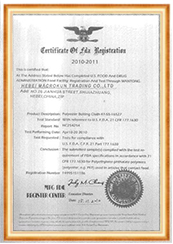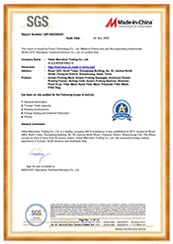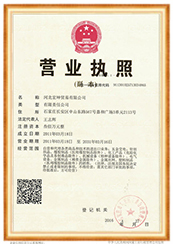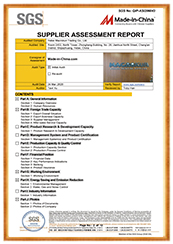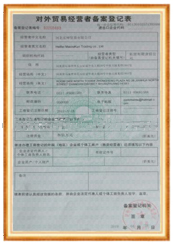Filtration systems are essential in many industries to ensure the purity and quality of liquids and gases. One key component of a filtration system is the filter cloth, which plays a crucial role in capturing impurities and contaminants. When it comes to choosing a filter cloth material, nylon stands out as a popular choice due to its durability, flexibility, and efficiency.
High-quality nylon cloth offers several benefits that make it an ideal choice for filtration systems. One of the main advantages of nylon cloth is its excellent resistance to abrasion and chemicals. This means that it can withstand harsh operating conditions without deteriorating, ensuring a longer lifespan for the filtration system. Additionally, nylon cloth is known for its high tensile strength, which allows it to retain its shape and integrity even under high pressure.
Another key benefit of using high-quality nylon cloth in filtration systems is its superior filtration efficiency. Nylon cloth has a tight weave that effectively captures even the smallest particles, ensuring that the filtered liquid or gas is free from impurities. This high filtration efficiency results in cleaner and purer end products, making it a preferred choice for industries that require strict quality control.
In addition to its durability and efficiency, nylon cloth is also highly versatile and can be customized to meet specific filtration requirements. Whether you need a fine mesh for fine particle filtration or a coarser mesh for larger contaminants, nylon cloth can be tailored to suit your needs. This flexibility makes it a versatile option for a wide range of applications, from water treatment to food and beverage processing.
Furthermore, high-quality nylon cloth is easy to clean and maintain, reducing downtime and maintenance costs for filtration systems. Unlike some other filter materials that require frequent replacement or cleaning, nylon cloth can be easily washed and reused multiple times without losing its effectiveness. This not only saves time and money but also minimizes waste and environmental impact.
Overall, upgrading your filtration system with high-quality nylon cloth can lead to significant improvements in performance, efficiency, and cost-effectiveness. By choosing a durable and efficient filter material like nylon cloth, you can ensure that your filtration system operates at its best, producing high-quality results consistently.
In conclusion, high-quality nylon cloth offers a range of benefits that make it an excellent choice for filtration systems. Its durability, efficiency, versatility, and ease of maintenance make it a reliable and cost-effective option for industries that require clean and pure liquids and gases. If you are looking to upgrade your filtration system, consider investing in high-quality nylon cloth to enhance its performance and reliability.
When it comes to choosing the right filtration system for your business, quality is key. One of the most important components of a filtration system is the filter cloth, which plays a crucial role in capturing and removing impurities from liquids or gases. Nylon cloth is a popular choice for filtration due to its durability, flexibility, and efficiency. In this article, we will discuss how to choose the right nylon cloth for your filtration needs.
First and foremost, it is important to consider the type of filtration application you will be using the nylon cloth for. Different filtration processes require different types of filter cloth, so it is essential to understand the specific requirements of your application. For example, if you are filtering a highly abrasive material, you will need a nylon cloth that is resistant to wear and tear. On the other hand, if you are filtering a corrosive substance, you will need a nylon cloth that is chemically resistant.
Another important factor to consider when choosing nylon cloth for filtration is the pore size. The pore size of the filter cloth determines the size of particles that can be captured and removed from the liquid or gas being filtered. It is important to choose a nylon cloth with the appropriate pore size for your application to ensure efficient filtration. If the pore size is too large, smaller particles may pass through the filter, reducing its effectiveness. Conversely, if the pore size is too small, the flow rate may be restricted, leading to decreased efficiency.
In addition to pore size, the thickness of the nylon cloth is also an important consideration. Thicker nylon cloth is more durable and can withstand higher pressures and temperatures, making it ideal for demanding filtration applications. However, thicker nylon cloth may also reduce the flow rate, so it is important to strike a balance between durability and efficiency when choosing the thickness of the filter cloth.
When selecting nylon cloth for filtration, it is also important to consider the weave pattern. The weave pattern of the filter cloth determines its strength, permeability, and particle retention capabilities. Common weave patterns for nylon cloth include plain weave, twill weave, and satin weave. Each weave pattern has its own unique characteristics, so it is important to choose the one that best suits your filtration needs.
Finally, it is important to choose high-quality nylon cloth from a reputable supplier. High-quality nylon cloth is more durable, efficient, and reliable, ensuring optimal performance of your filtration system. Reputable suppliers offer a wide range of nylon cloth options to choose from, allowing you to find the perfect filter cloth for your specific application.
In conclusion, choosing the right nylon cloth for your filtration needs is essential for the success of your filtration system. By considering factors such as filtration application, pore size, thickness, weave pattern, and quality, you can ensure that your filtration system operates efficiently and effectively. Upgrade your filtration system with high-quality nylon cloth today and experience the benefits of superior filtration performance.
Maintaining a nylon cloth filtration system is essential for ensuring optimal performance and longevity. As industries increasingly rely on efficient filtration processes, understanding how to care for these systems can significantly impact operational efficiency. One of the first steps in maintaining a nylon cloth filtration system is to establish a regular cleaning schedule. Over time, contaminants can accumulate on the cloth, leading to reduced flow rates and compromised filtration quality. By implementing a routine cleaning protocol, operators can prevent these issues and maintain the system’s effectiveness.
| Class | Mesh Count (/cm) |
Mesh Count (/inch) |
Thread Dia (um) |
Mesh Opening (um) |
Thickness (um) |
Weight (g/m2) |
| NL4/1950 | 4 | 10 | 550 | 1950 | 1100 | 307 |
| NL5/1500 | 5 | 13 | 500 | 1500 | 1000 | 318 |
| NL6/1267 | 6 | 15 | 400 | 1267 | 800 | 244 |
| NL7/1079 | 7 | 18 | 350 | 1079 | 700 | 218 |
| NL8/900 | 8 | 20 | 350 | 900 | 700 | 249 |
| NL9/861 | 9 | 23 | 250 | 861 | 500 | 143 |
| NL9/811 | 9 | 23 | 300 | 811 | 600 | 206 |
| NL10/750 | 10 | 25 | 250 | 750 | 500 | 159 |
| NL10/700 | 10 | 25 | 300 | 700 | 600 | 229 |
| NL12/583 | 12 | 30 | 250 | 583 | 500 | 191 |
| NL12/533 | 12 | 30 | 300 | 533 | 600 | 274 |
| NL14/514 | 14 | 36 | 200 | 514 | 340 | 142 |
| NL16/425 | 16 | 40 | 200 | 425 | 340 | 160 |
| NL20/350 | 20 | 50 | 150 | 350 | 255 | 113 |
| NL20/300 | 20 | 50 | 200 | 300 | 340 | 200 |
| NL24/267 | 24 | 60 | 150 | 267 | 255 | 135 |
| NL28/237 | 28 | 70 | 120 | 237 | 204 | 101 |
| NL30/213 | 30 | 76 | 120 | 213 | 204 | 110 |
| NL32/213 | 32 | 80 | 100 | 213 | 170 | 80 |
| NL36/178 | 36 | 90 | 100 | 178 | 170 | 90 |
| NL40/150 | 40 | 100 | 100 | 150 | 170 | 100 |
| NL43/153 | 43 | 110 | 80 | 153 | 136 | 70 |
| NL48/128 | 48 | 120 | 80 | 128 | 136 | 77 |
| NL56/119 | 56 | 140 | 60 | 119 | 102 | 50 |
| NL64/96 | 64 | 160 | 60 | 96 | 102 | 58 |
| NL72/89 | 72 | 180 | 50 | 89 | 85 | 45 |
| NL80/75 | 80 | 200 | 50 | 75 | 85 | 50 |
| NL100/57 | 100 | 250 | 43 | 57 | 73 | 46 |
| NL110/48 | 110 | 280 | 43 | 48 | 73 | 52 |
| NL120/48 | 120 | 300 | 35 | 48 | 60 | 37 |
| NL120/40 | 120 | 300 | 43 | 40 | 73 | 55 |
| NL130/42 | 130 | 330 | 35 | 42 | 60 | 40 |
| NL130/34 | 130 | 330 | 43 | 34 | 73 | 61 |
| NL140/36 | 140 | 350 | 35 | 36 | 60 | 43 |
| NL157/25 | 157 | 400 | 43 | 25 | 73 | 74 |
| NL180/20 | 180 | 450 | 39 | 20 | 66 | 68 |
| NL200/15 | 200 | 500 | 39 | 15 | 66 | 76 |
| NL220/10 | 220 | 550 | 39 | 10 | 66 | 84 |
| NL240/5 | 240 | 600 | 39 | 5 | 66 | 91 |
When it comes to cleaning, it is crucial to use the appropriate methods and materials. High-quality nylon cloth is designed to withstand various cleaning agents, but it is essential to avoid harsh chemicals that could degrade the fabric. Instead, opt for mild detergents and warm water, which can effectively remove debris without damaging the cloth. Additionally, using a soft brush or cloth during the cleaning process can help dislodge particles without causing wear and tear. After cleaning, thoroughly rinse the nylon cloth to ensure that no detergent residue remains, as this can interfere with the filtration process.
In addition to regular cleaning, monitoring the condition of the nylon cloth is vital. Over time, even the most durable materials can show signs of wear, such as fraying or thinning. Regular inspections can help identify these issues early, allowing for timely replacements before they lead to system failures. It is advisable to establish a checklist for inspections, focusing on areas such as seam integrity, fabric strength, and overall cleanliness. By being proactive in this regard, operators can avoid costly downtime and maintain consistent filtration performance.
Another important aspect of maintenance is ensuring that the filtration system operates within its designed parameters. This includes monitoring flow rates and pressure differentials, as deviations can indicate potential problems. For instance, a sudden drop in flow rate may suggest that the nylon cloth is becoming clogged, while an increase in pressure could signal that the cloth is nearing the end of its useful life. By keeping a close eye on these metrics, operators can make informed decisions about when to clean or replace the filtration media.
Furthermore, proper storage of nylon cloth filters when not in use is essential for maintaining their integrity. Exposure to extreme temperatures, humidity, or direct sunlight can degrade the material over time. Therefore, it is advisable to store filters in a cool, dry place, ideally in a protective covering that shields them from environmental factors. This simple step can extend the lifespan of the filtration media and ensure that it remains ready for use when needed.
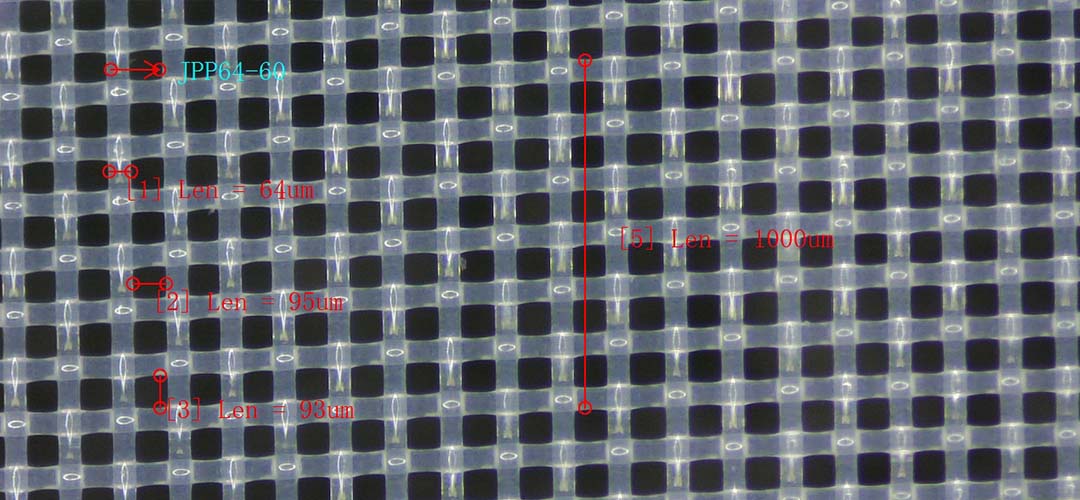
Lastly, training personnel on the proper maintenance procedures is crucial for the success of any filtration system. Ensuring that staff members understand the importance of regular cleaning, inspection, and monitoring can foster a culture of accountability and diligence. By equipping employees with the knowledge and skills necessary to maintain the nylon cloth filtration system, organizations can enhance operational efficiency and reduce the likelihood of unexpected failures.
In conclusion, maintaining a nylon cloth filtration system requires a combination of regular cleaning, diligent monitoring, proper storage, and staff training. By adhering to these maintenance tips, organizations can ensure that their filtration systems operate at peak performance, ultimately leading to improved productivity and reduced operational costs. Investing time and resources into these practices will pay dividends in the long run, as a well-maintained filtration system is key to achieving consistent and reliable results.
When it comes to selecting the right filtration material for your system, the choice can significantly impact efficiency, durability, and overall performance. Among the various options available, nylon cloth has emerged as a leading contender, particularly when compared to traditional filtration materials such as polyester, polypropylene, and cotton. Each of these materials has its own set of advantages and disadvantages, but nylon cloth consistently stands out for its superior characteristics.

To begin with, nylon cloth is known for its exceptional strength and durability. Unlike cotton, which can degrade over time and lose its structural integrity, nylon maintains its form even under rigorous conditions. This resilience makes it an ideal choice for applications that require long-lasting performance, reducing the need for frequent replacements and ultimately lowering operational costs. Furthermore, nylon’s resistance to abrasion and tearing ensures that it can withstand the rigors of various filtration processes, making it a reliable option for industries ranging from food and beverage to pharmaceuticals.
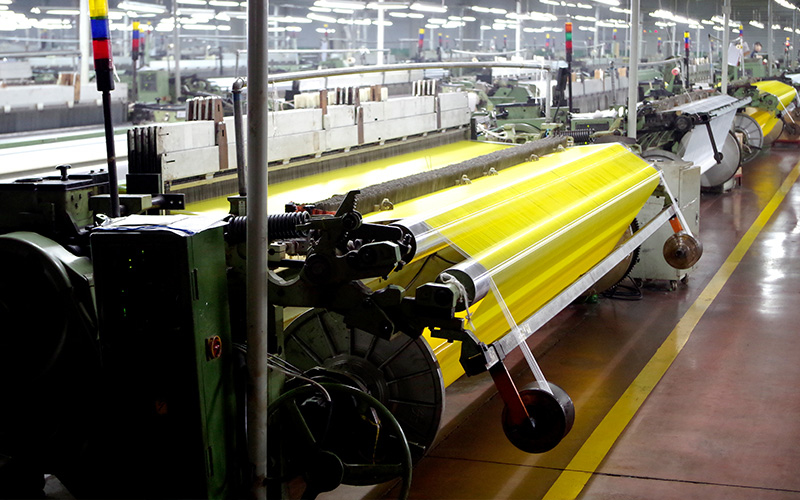
In addition to its strength, nylon cloth offers excellent chemical resistance. While polypropylene is often praised for its chemical stability, it does not match the versatility of nylon when it comes to handling a broader range of substances. Nylon can effectively filter out a variety of chemicals, oils, and solvents without compromising its integrity, making it suitable for more complex filtration tasks. This adaptability is particularly beneficial in environments where the nature of the materials being filtered may change frequently, allowing businesses to maintain efficiency without the need for constant material changes.
Moreover, nylon cloth exhibits superior filtration efficiency. Its fine mesh structure allows for the capture of smaller particles compared to other materials like polyester, which may not provide the same level of precision. This capability is crucial in applications where even the slightest contamination can lead to significant quality issues. By utilizing nylon cloth, companies can ensure that their products meet stringent quality standards, thereby enhancing customer satisfaction and trust.
Another important aspect to consider is the ease of maintenance associated with nylon cloth. Unlike cotton, which can absorb moisture and become a breeding ground for bacteria, nylon is inherently resistant to moisture and microbial growth. This characteristic not only simplifies the cleaning process but also contributes to a more hygienic filtration system. Additionally, nylon cloth can be easily washed and reused, further extending its lifespan and reducing waste, which aligns with the growing emphasis on sustainability in various industries.
Transitioning to the cost aspect, while nylon cloth may have a higher initial investment compared to some other materials, its long-term benefits often outweigh the upfront costs. The durability, efficiency, and reduced maintenance requirements translate into significant savings over time. Businesses that prioritize quality and reliability in their filtration systems will find that nylon cloth is a worthwhile investment that pays dividends in performance and longevity.
In conclusion, when comparing nylon cloth to other filtration materials, it becomes evident that its unique combination of strength, chemical resistance, filtration efficiency, and ease of maintenance positions it as a superior choice. As industries continue to evolve and demand higher standards, upgrading to a high-quality nylon cloth filtration system is not just a smart decision; it is a strategic move that can enhance operational efficiency and product quality. By making this upgrade, businesses can ensure they are equipped to meet the challenges of today’s competitive landscape while also preparing for future advancements in filtration technology.
Pre: Screen Printing Dring Rack
Next: 40 Micron Nylon Mesh – Perfect for Fine Particle Filtration

MACROKUN has established long-term and stable cooperative relations with many transportation companies such as China Post, DHL, FEDEX, USPS, UPS, etc. Of course, MACROKUN can also provide air and sea transportation. The powerful logistics system enables all MACROKUN'S Printing Mesh, Filter Mesh and Filter Bags and so on to be easily and efficiently transported to any place. For quotes and inquiries, please email our sales team.
